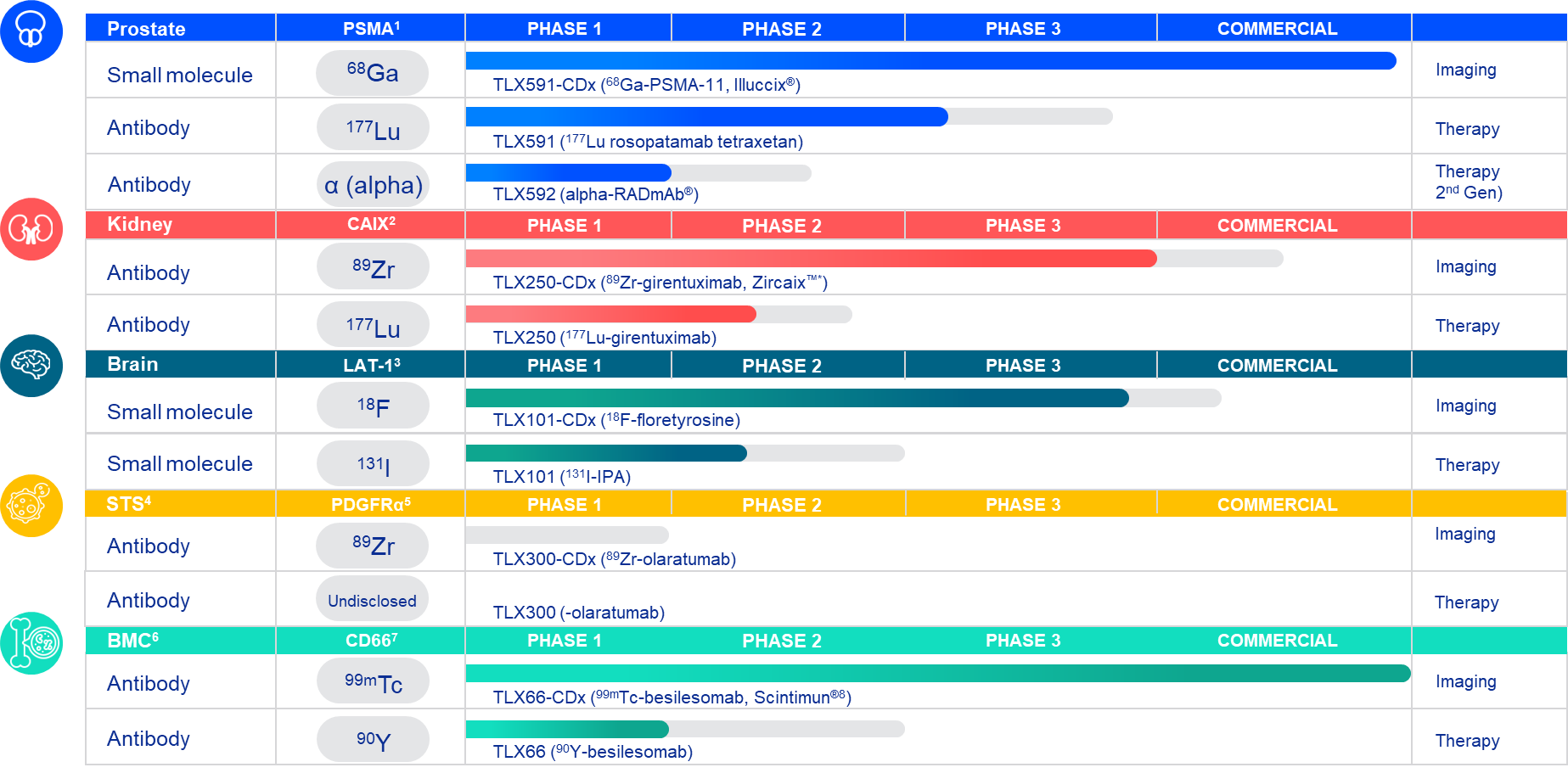Welcome to Theranostic Trials by Telix Pharmaceuticals
About Telix
Telix Pharmaceuticals is a commercial-stage biopharmaceutical company focused on the development and commercialisation of diagnostic and therapeutic radiopharmaceuticals and associated medical devices.
With nuclear medicine finally coming of age, Telix’s goal is to harness this momentum for the benefit of patients. We are investigating how molecularly targeted radiation (MTR) can support imaging approaches and personalised therapy.
Telix is headquartered in Melbourne, Australia with international operations in Belgium, Switzerland, Japan and the United States.
Telix’s core development pipeline is focused on prostate, kidney, brain (glioblastoma), and hematologic cancers.
Purpose of Theranostic Trials
Theranostic Trials is a non-promotional, educational resource for healthcare professionals.
Bringing together information about radiopharmaceutical diagnostic and therapeutic (‘theranostic’) approaches, Theranostic Trials aims to help facilitate transparent scientific exchange regarding developments in theranostic medical research and ongoing clinical trials (both company sponsored and in collaboration with leading global cancer centres), as well as providing background information on the surrounding disease areas.
Telix Core Pipeline

![]() Shaded sections indicate expected development stage in the next 12 months.
Shaded sections indicate expected development stage in the next 12 months.
- Prostate-specific membrane antigen.
- Carbonic anhydrase IX.
- Large amino acid transporter 1.
- Soft tissue sarcoma.
- Platelet Derived Growth Factor Receptor Alpha.
- Bone marrow conditioning.
- Cluster of differentiation 66.
- Marketed under licence by Curium Pharma.
* Nominated brand name subject to final regulatory approval.
Prostate/PSMA
Prostate cancer is the most commonly diagnosed male cancer and a leading cause of death in men. Worldwide, more than 1.4 million men were diagnosed in 2020, and >375,000 died from their disease (WHO, 2020).
Kidney/CAIX
Renal cell carcinoma is the most common and aggressive form of kidney cancer. Renal cell carcinoma is an increasingly frequent cancer, having more than doubled in incidence in the developed world over the last 50 years (Padala et al, World Journal of Oncology, 2020). Worldwide, there were more than ~400,000 new cases in 2020, and >175,000 people died from their disease (WHO, 2020).
Brain/LAT-1
Glioblastoma (GBM) is the most common and aggressive form of primary brain cancer. Worldwide, more than 300,000 people were diagnosed with brain or central nervous system cancer in 2020, and 250,000 died from their disease (WHO, 2020).
Sarcoma/PDGFRα
The targeting of activated fibroblasts in the tumour micro-environment is a promising strategy to elucidate durable treatment responses in certain solid tumors.
Telix’s TLX300 program consists of antibody-directed targeted radiation for both diagnostic and therapeutic applications, against platelet-derived growth factor receptor alpha, or PDGFRα.
Rare disease and Bone marrow Conditioning/CD66
The indications for bone marrow transplantation are increasing from haematological malignancies to solid tumours and autoimmune conditions.
Traditional conditioning regimens are associated with morbidity and mortality from chemotherapy, limiting their use particularly in paediatric and rare diseases.